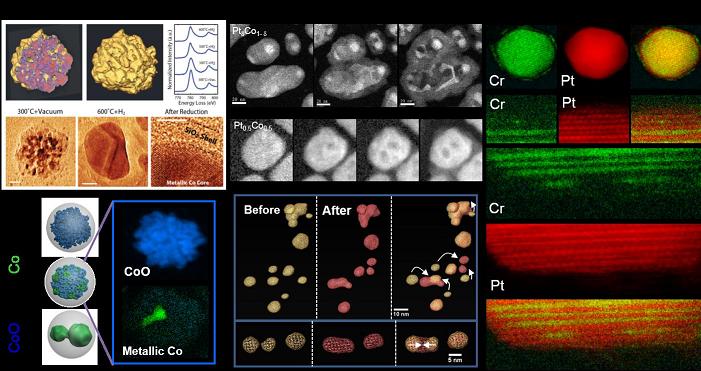Atomic-Resolution Spectroscopic Imaging and In Situ Environmental Study of Bimetallic Nanocatalyts
Huolin L. Xin
Materials Sciences Division, Lawrence Berkeley National Lab, Berkeley, CA 94720, USA
10:00 a.m. Sep.23th, 2013
2nd Floor Meeting Room, Chemistry Building
Bimetallic nanoparticles are promising candidates for electro- and heterogeneous catalysis because their catalytic activity is frequently superior to their monometallic
counterparts. However, the additional degree of freedom introduces a new complexity into the mechanism because the distribution of the two metals may vary during
reaction. For example, preferential adsorption of reactive molecules can induce segregation of one component, structural changes, and elementspecific phase
transformations. Uncovering the chemistry, structure, and degradation pathways of materials under catalytic conditions is of fundamental importance for establishing
structure-property relationships and for the design of new catalytic materials.
Aberrationcorrected scanning transmission electron microscopy (STEM), in combination with electron energy loss spectroscopy (EELS), is exquisitely poised for
studying structural, compositional, and electronic properties of nanocatalysts. The enlarged numerical aperture coupled with the use of a coldfieldemission gun allows
for the acquisition of 2D compositional and bonding maps of both bulk and nanostructured materials at atomic resolution. Additionally, the development and inclusion
of differentially-pumped gas cells inside a transmission electron microscope (TEM) permits the visualization of solidgas chemical reactions
in situ. Imaging atomicscale reaction dynamics and the acquisition of spectroscopic fingerprints allows us to reveal reaction pathways that
cannot be resolved by any other approach. Here, I will provide background on our techniques, including STEM, EELS, electron tomography, and in
situ environmental methods, and I will show how the surface and internal structures of Pttransition metal bimetallic nanocatalysts reconstruct in response to
annealing, acid leaching, operational aging, gas oxidation, and reduction. I will also discuss the current challenges and future prospects for quantitative
environmental TEM.

